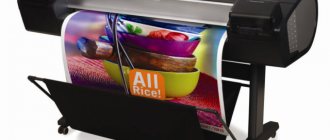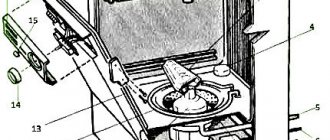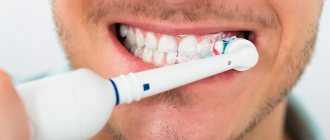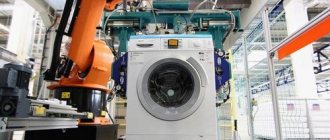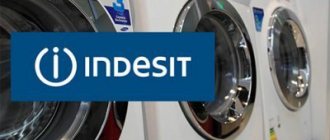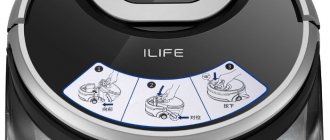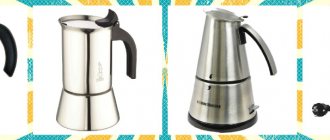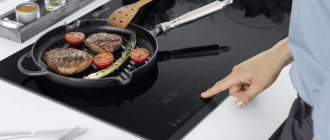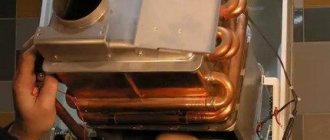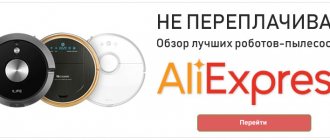Oral hygiene is important at any age. According to the recommendations of leading dentists, parents should teach their child to use a toothbrush from the very first tooth of the baby. Without a doubt, the choice of cleaning products must be approached with all responsibility so as not to harm the health of the little man. The editors of the Yanashla website have prepared for you a rating of the best children's toothbrushes.
Tips for choosing
Nowadays, you can easily find toothbrushes for every taste and color in stores. When choosing, many mothers rely only on brand recognition and price category. Often parents, wanting their child to get the best, buy expensive brushes, because a high price seems to be a guarantee of quality. However, the correct choice lies in other characteristics. So what should you look for when looking for a toothbrush?
- Appearance. This is a very important criterion for a baby. A bright object will arouse the child's interest and encourage him to try to brush his teeth. Often, many parents are faced with a problem when they cannot persuade their child to brush his teeth. A bright brush with cartoon characters will be an excellent helper in this case.
- Age criterion - you need to focus on the child’s age not only when looking for toothpaste, but also when choosing a brush. Depending on this indicator, brushes of different sizes, with different bristles and designs are produced. For children under one year old, a device with a chewing rod will be suitable, which will relieve the itching from teething. Children of preschool and primary school age need a brush with bristles of different lengths to ensure complete oral care.
- Handle – we advise you to pay attention to this parameter, since an uncomfortable brush handle can interfere with quality teeth cleaning. The handle should be covered with rubber anti-slip material, and its length varies depending on the age of the child.
- Brush head. It should not be too large, otherwise it will cause discomfort for the child. The shape should be oval without corners; it may have a rodent for young children.
- Bristles - the most optimal length of the bristles should be 10-11 cm. This size will ensure the best quality cleaning of teeth and interdental spaces. The hardness should be soft or medium. You should not buy brushes that are too hard, as they can injure your baby’s delicate gums. In addition, it is recommended to additionally purchase a small cover for the bristles, which will protect against pathogenic bacteria that can settle on the brush.
- In recent years, parents have been leaning towards using electric toothbrushes. It is best to start using such devices after 3 years. An electric brush must be intended for a child. The speed of vibration and rotation, the length of the tip - all these parameters strictly depend on the age category.
- Special mention should be made of the small silicone finger brushes. They are used in babies 3 months of age and above. Such devices will help cleanse the oral cavity of microorganisms and relieve itching and pain from teething.
First toothbrush – before and after one year
As mentioned above, each stage of growing up requires its own oral care. The following are the basic principles of maintaining hygiene in childhood:
- up to 1 year - clean the gums with gauze soaked in boiled water at room temperature, and also use silicone fingertips for more thorough cleaning of the first teeth that appear,
- after 1 year - continue to use finger pads and gradually switch to a baby brush with rubber bristles and a limiter on the handle that prevents tissue injury,
- with the appearance of incisors, canines and molars, you can begin to use a full-fledged model, but taking into account children's age, therefore with a small head and soft bristles.
You can rely on the age markings on the packaging, but most often they are too vague. Therefore, it is better to choose a model individually, according to the recommendations of the observing pediatric dentist.
How to brush your teeth correctly
Cleaning should be done at least twice a day. A properly selected toothbrush should be positioned at an angle of 45º relative to the tooth. Then you should carefully brush your teeth without strong pressure using sweeping movements in the direction from the gums to the edge of the tooth. It is enough to carry out the procedure within 2 minutes. Now on the market you can easily find special brushes with a timer that allows you to stay on time.
Remember that regular and proper brushing of teeth will be an excellent prevention of oral diseases and will avoid the formation of tartar and plaque on the surface of the teeth.
How to properly care for your first toothbrush
Modern children's models are not designed for intensive heat treatment. This means that they do not need to be doused with boiling water or boiled. They must be washed thoroughly with soap after each cleaning. It should be stored in a separate glass, with the bristles facing up. When purchasing a brush for a child, be sure to carefully read the instructions and care recommendations.
On a note! Many parents are interested in how to treat the product before first use. In fact, after unpacking the brush remains completely sterile and does not require any additional manipulations. Sometimes it is advised to pour boiling water over the bristles, but this will only help soften them a little to avoid injury to the gums.
Always consult your pediatric dentist about any hygiene products, including toothpastes. Only a doctor will be able to accurately assess the current condition of primary incisors and molars and, based on this, give correct recommendations for oral care.
1Borovsky E.V. Dental health is in our hands, 2004.
How to teach a child to brush their teeth
There are situations when the baby categorically does not want to brush his teeth. There is no need to despair, much less force a child. In this case, you can do the following:
- First, tell your child about the benefits of brushing teeth. Explain what consequences can develop if hygiene is not maintained. However, try not to overdo it so as not to intimidate the baby;
- Show by example how to brush your teeth. If there is an older child, have him demonstrate his ability to use a brush. Little children love to imitate adults, take advantage of this opportunity;
- While brushing, come up with a captivating story about your teeth. The plot of this tale will be told to you by the pictures depicted on the brush. You can also carry out hygiene activities in a playful way;
- Pictures and videos of children cleaning their mouths will also be excellent helpers. Complete the pictures with your own stories and be sure to praise your baby;
- and one more trick - delicious toothpaste. Buy one whose taste the child is likely to like, and it will be easier to persuade him. Don't worry if your baby swallows it - properly selected toothpaste is absolutely harmless.
Below we will provide a list of the best toothbrushes for children, taking into account reviews from parents and recommendations from dentists.
How to choose a brush for a child - main characteristics
A product for the first teeth should not only be bright and attractive. It must meet a number of important criteria, and here are the main ones:
- the product must be made of high-quality plastic - be sure to check for a certificate,
- For the first years, soft or ultra-soft bristles are suitable. You can switch to medium hardness from the age of three,
- give preference to synthetic bristles, as they are more wear-resistant and do not create a favorable environment for the growth of bacteria. Natural bristles are a real breeding ground for harmful microorganisms, and regular disinfection quickly renders the product unusable. The best option during the “teeth to teeth” period is silicone bristles,
- for babies older than one year, the length of the pile should be about 11 mm, let’s say a multi-level option with a V-shaped arrangement of synthetic bristles,
- The handle must have rubberized anti-slip elements. From the age of 2-5 years, the length of the handle can reach 15 cm. It is desirable that there is a flexible connection between the base and the head,
- the head size should not exceed 15 mm - for the smallest. From the age of 2, its length can reach 20 mm, and its shape must be smooth and streamlined1,
- It is desirable that there is a rubberized ribbed surface on the back of the working area - it is designed to clean the tongue.
Be careful when choosing a children's toothbrush.
As for the appearance and design, everything depends on the preferences of the parents and the baby. The modern assortment offers the widest variety for every taste and color.
List of the best children's brushes in the budget segment
Oral-B Baby
This model is intended for ages 0-2 years. The head is oblong with very soft bristles. The design is classic. The main purpose of the product is for teething teeth and gums. The holder is curved, on the reverse side it has a rubberized insert with concave grooves for fingers - it does not allow it to slip in the hand.
Oral-B Baby toothbrush
Advantages:
- design;
- soft bristles;
- comfortable;
- inexpensive;
- safe;
- “copes with his responsibilities”;
- good quality.
Flaws:
- not identified.
The average cost is 150 Russian rubles.
Pigeon 10542
The Pigeon kit is a step-by-step system for teaching yourself how to brush your teeth. It consists of two small objects of different colors (white-green, white-yellow), one of which is for babies from 0 to 12 months with rubber bristles for teething teeth and gums + preparation for the transition to a standard brush, the other is for 1-3 -year-olds (mastering the skills of self-cleaning the oral cavity).
The head of the second product, reminiscent of an adult model, has short, very thin bristles of a soft degree of rigidity.
The handle is ergonomically shaped, with a silicone insert that has a limiter at the top so that the child cannot insert it deeply.
Pigeon 10542
Advantages:
- fits comfortably in the hand;
- small size;
- ergonomic shape;
- high degree of security;
- equipment;
- high quality
Flaws:
- not identified.
The average cost is 290 Russian rubles.
PresiDENT Kids-Junior
This dental device with an age limit of 5-11 years and a bright design is intended for self-cleaning. The handle is thickened, with rubber inserts. On the front side there is a slope for the thumb, on the reverse side - for the rest. The head is cone-shaped with soft graduated nylon bristles with rounded tips, divided into two tufts: the upper one is small, blue, the lower one is larger, white, in combination they allow you to thoroughly remove food debris in the interdental spaces and effectively clean the back teeth.
Technical characteristics: 14.5 cm – length, 25 grams – packaged weight. The set includes a protective cap.
PresiDENT Kids-Junior toothbrush
Advantages:
- non-slip handle;
- providing careful care;
- appearance;
- effective;
- inexpensive;
- storage cap.
Flaws:
- not identified.
The average cost is 190 Russian rubles.
Curaprox Curakids CK 4260
This compact, cute brush is suitable for use by children aged 0 to 4 years. That is, this brush will be an excellent tool for caring for your very first tooth. Delicate and very soft bristles will not allow you to injure the child’s gums, and the comfortable rubberized handle will be easy to hold in your hands.
The special structure of the bristles is aimed at high-quality and gentle removal of plaque; all materials from which the brush is made are completely safe.
Curaprox Curakids CK 4260 brush
Advantages:
- stand at the base of the brush;
- Ease of use;
- gentle cleansing.
Flaws:
- high price;
- minimalistic design.
The average cost is 460 Russian rubles.
BABYONO
The set of toothbrushes includes three accessories, each of which corresponds to a specific age of the baby. Such a set will be a successful and convenient purchase, since parents will not have to constantly search for and purchase brushes for a new stage of oral care. What brushes are included?
- Massager for teething period. This teether will provide complete care for your baby’s gums.
- Silicone brush for first teeth. It is made of safe materials, the bristles themselves are very soft.
- Silicone toothbrush for the care and cleansing of teeth and oral cavity in older children.
The brushes are available in different colors, have a comfortable handle and do not cause local allergic reactions.
BABYONO brush set
Advantages:
- The set contains the entire set of brushes - it’s very convenient;
- comfortable handle;
- safety.
Flaws:
- not found.
The average cost is 270 Russian rubles.
DIES KIDS
The soft brush is designed for oral care for children aged 2 to 8 years. The bristles carefully and carefully remove plaque from the teeth, and a special pad will remove plaque and harmful bacteria from the surface of the tongue.
When brushing teeth, it is extremely important not to damage the child’s fragile tooth enamel, which is why the manufacturer has created a brush with rounded bristles. This approach will ensure safe cleansing.
DIES KIDS brush
Advantages:
- ergonomic handle design;
- careful care;
- suction cup at the base of the brush;
- complete and high-quality oral care.
Flaws:
- none.
The average cost is 35 Russian rubles.
Oral-B Junior.
This accessory is designed specifically for older children. Namely for those guys who already have both molars and baby teeth. The intersecting bristles are made of soft materials. This brush structure allows you to quickly and safely remove food debris without damaging your tooth enamel. The ergonomic non-slip handle will also make the hygiene process more convenient.
The brush is recommended for children from 6 to 12 years old.
]Oral-B Junior brush
Advantages:
- unique bristle arrangement system;
- does not slip in your hands.
Flaws:
- none.
The average cost is 130 Russian rubles.
Bebe comfort
Very interesting and unusual brushes from the French brand. The set includes two all-silicone brushes and a brush with regular bristles. These hygienic devices can be used for both teething and oral hygiene.
A comfortable rubberized handle will prevent slipping, and the material used will allow you to keep the brushes clean. To do this, just boil them in water for a few minutes. Recommended age for use is 3-36 months.
Bebe comfort brushes
Advantages:
- The set includes a case for brushes;
- versatility and safety of use;
- easy to sterilize.
Flaws:
- harsh stubble.
The average cost is 440 Russian rubles.
Colgate SpongeBob
According to manufacturers, this electric brush cleans teeth more effectively and efficiently than a regular one. This is due to the fact that the device has a small vibrating head of a standard nozzle, which carefully cleans the oral cavity. The enamel is not damaged during brushing.
The colorful handle of the accessory has a large power button, so it will be easy for your child to use the device independently. Power is supplied via batteries. The brush is suitable for children from 3 years old.
Colgate SpongeBob brush
Advantages:
- low cost;
- batteries included;
- bright design.
Flaws:
- no timer;
- not the highest quality material;
- one non-replaceable nozzle;
- Suitable for standard cleaning only;
- There is no battery charge sensor.
The average cost is 290 Russian rubles.
Aquafresh My baby teeth
And finally, we present to you children’s favorites – brushes with bright, replaceable caps in the shape of animals. These accessories are designed for children 3-5 years old.
The bright and cheerful design will motivate the baby to brush his teeth regularly, and the comfortable handle will prevent slipping in his hands. There is a suction cup at the base of the brush, making it easy to store the device. The soft bristles will gently clean your teeth and gums.
Aquafresh children's toothbrush
Advantages:
- protective cap;
- suction cup for storage and fastening;
- careful care;
- bright appearance;
- ergonomic design.
Flaws:
- The brush quickly loses its presentation.
The average cost is 90 Russian rubles.
How to choose a children's toothbrush? Features, characteristics, types and selection criteria
Today we will learn how to choose a children's toothbrush, what features, characteristics, degree of bristles stiffness and size the selected model should have, as well as which device is best to buy
HOW TO CHOOSE A CHILDREN'S TOOTHBRUSH? FEATURES, CHARACTERISTICS, TYPES AND SELECTION CRITERIA
Good afternoon, today we will learn how to choose the right children's toothbrush
, what
features
,
characteristics
,
functions
, degree
of stiffness of the bristles
and
dimensions
should the selected
model
, as well as what device is best
to buy
for a child.
Usually at 6-7 months
The child's first teeth appear.
And by the age of 3
- a full set - 20 milk teeth. The appearance of baby teeth is an important moment in a child’s life. Parents have new concerns and questions. You need to choose the first toothbrush and toothpaste, and teach your baby to take care of his teeth.
HOW TO CHOOSE A CHILDREN'S THERMOMETER? VARIETIES AND FUNCTIONALITY
WHEN SHOULD YOU START BRUSHING YOUR CHILD'S TEETH?
Choosing a toothbrush
For
a child
this is not an easy task. On sale you can find a huge variety of types of toothbrushes for children based on material, shape, size and design. And here the rule does not always apply: the more expensive, the better. So what should a baby's first toothbrush be? And what brushes should be used to clean the teeth of older children and younger schoolchildren?
A children's toothbrush has its own characteristics
:
comfortable short handle, soft bristles, small head and small cleaning surface (about 2 children's teeth).
Due to imperfect motor skills, the baby is not yet able to brush his teeth efficiently on his own. Sometimes parents buy two toothbrushes for their child at once, so that one (with a short handle) is used by the child himself, and the second (with a long handle) is for the parents to “finish” the child’s teeth in order to completely remove plaque and food debris. It is recommended to do this type of repeated brushing regularly until approximately 5 years of age, until you are sure that the child brushes his teeth correctly and well.
What criteria should you use to choose a toothbrush for a child? When choosing a children's toothbrush, you need to pay attention to the following criteria:
1
.
HOW TO CHOOSE A CHILDREN'S TOOTHBRUSH BY AGE?
The first and, perhaps, main criterion for choosing a children's toothbrush is that it must be appropriate for the child's age.
Depending on the age of the child, brushes differ in type and size. Some manufacturers use a cunning marketing ploy and label toothbrushes with too large an age range, from 1 year to 7 years. But this is not true, because as the baby grows, the type of brush needs to be changed.
1
.
1
.
Brush with soft silicone bristles – age from 6 months to 1.5 years
;
Your baby will need his first toothbrush when his first baby teeth emerge. Each baby has its own teething time. Pediatricians usually call the average period 6 - 8 months
.
But the first milk tooth may appear at 4-5 months
or closer to a year.
An excellent first toothbrush for a baby from 6 months to 1 year.
(
1.5 years
) will become a silicone brush with small silicone fibers (bristles). The silicone brush gently cleanses the teeth and gums, and will also act as a massager for the gums, help with itchy teething pain and introduce the baby to a toothbrush. Usually kids like this silicone brush.
There are two types of such silicone brushes:
A) Silicone fingertip for cleaning teeth ( silicone finger brush
) is a transparent silicone cap with many short silicone bristles at the tip. It is also often called a silicone finger massager brush. Before brushing the baby's teeth and gums, it is placed on the parent's index finger.
B) Silicone brush with limiter. In shape, it resembles a regular toothbrush with a handle, but this entire brush is made of silicone, the bristles are small silicone, and on the top of the handle there is a silicone limiter ring that prevents you from sticking the device too deep into your mouth. This is a suitable option for an independent child, as there is a safe limiter.
How to use a silicone brush?
If this is a finger brush, then it needs to be placed on the parent’s index finger. Next, you need to clean your teeth with a brush using light sweeping movements in the direction from the gum to the edge of the tooth, periodically rinsing the brush with water. Then gently clean your gums.
After brushing your teeth, wash the brush thoroughly with soap or baby dishwashing detergent and rinse under running warm water. Before each use, it is recommended to sterilize the toothbrush (in boiling water, in a steam sterilizer, etc.).
The silicone toothbrush should be stored clean in a separate open container with the bristles facing up. The brush needs to be replaced once every 2-3 months.
Silicone brushes for cleaning teeth can be found in different brands, for example, Canpol, Pigeon, Lubby, Businka, Skazka and others.
However, it is worth noting that the effectiveness of cleaning with a silicone brush is not high, so it makes no sense to use it for children older than one and a half years. It is better after a year to switch to the next type of toothbrush with regular bristles using children's toothpastes.
HOW TO CHOOSE CHILDREN'S TOOTHPASTE?
1
.
2
.
Toothbrush for children with bristles
By about 1.5 - 2 years
The child should have his own real toothbrush with bristles. Of course, there is no clear time frame for switching to a toothbrush; everything here is individual, and we present average indicators.
During this period, the baby’s mouth will already be filled with teeth, and it’s time to switch to a small brush with bristles. But remember that parents need to brush their teeth with a toothbrush or supervise this process.
- from 1.5-2 years to 3 years
At the age of one and a half, babies have already switched to solid food and from about 1.5-2 years old they can switch to a “classic” children’s toothbrush with bristles.
For this age period, toothbrushes should have a non-slip, comfortable handle and a small head (no more than two to two and a half children’s teeth in length) to make it easier to move in a child’s mouth.
The bristles should be soft, rounded and well polished so as not to injure the gums. There should be about twenty tufts of bristles in total to clean your teeth more effectively.
For ages 1.5 to 3 years, the most convenient is a toothbrush with a short, wide, non-slip handle about 10 cm; soft rounded bristles; small head and cleaning surface 1.5 cm - from 3 to 5 years
For children 3-5 years old, a toothbrush with a short comfortable arm (13-17 cm), soft bristles, and a small head with a cleaning surface of 2 cm is suitable.
— 5-7 years
During the period of 5-7 years, children's milk teeth change. During this period, the head of the brush should remain small, but the handle should be long and comfortable, and the bristles become the same as on adult models. In addition, some dentists recommend buying a special brush with bristles of different lengths for younger schoolchildren.
1
.
3
.
An electric toothbrush
An electric toothbrush is recommended for children over 5 years of age. Under the age of five, you should not use such brushes so as not to injure the enamel of baby teeth. In addition, it will be difficult for the baby to hold a heavy electronic device on his own; he may drop it.
2
.
CHARACTERISTICS OF CHILDREN'S TOOTHBRUSH HEAD
When considering the characteristics of a toothbrush head for a child, it is important to determine the size and shape.
2
.
1
.
Brush head size
The brush head should not be too large, otherwise it will not be possible to properly clean the areas where the jaw curves. In addition, the baby will be uncomfortable and brushing his teeth will cause an unpleasant experience. The optimal size for a toothbrush head is 2-3 child teeth. For example, for a one-year-old baby, an option of 1.5 cm is suitable. For a child 2-3 years old, the length of the head may be already 2 cm.
2
.
2
.
Shape of the head
The shape of the head should be streamlined, without corners or any protrusions, to avoid damage to the gums. Usually an oval shape is chosen.
2
.
3
.
Head design
You can find options for brushes where the head has bristles on both sides: on one side there are long synthetic bristles for cleaning teeth, and on the other side there are short silicone bristles for massaging the gums and cleaning the tongue from plaque.
3
.
FEATURES OF CHILDREN'S TOOTHBRUSH BRISTLES
3
.
1
.
Bristle hardness
All toothbrushes are divided into the following categories according to hardness: ultra-soft, soft, medium hard, hard and ultra-hard brushes.
The first toothbrush should be soft. If there are problems with enamel or bleeding gums, then ultra-soft.
For younger schoolchildren ( 5-7 years old
) it is better to choose models with soft bristles or medium-hard bristles. An ultra-soft one will not cope with plaque, and an ultra-hard one can lead to damage to the gums.
When choosing the degree of stiffness of the bristles, you should look not only at the age of the child, but also pay attention to his individual characteristics. For example, with tightly fitting teeth with good enamel and gums, a soft toothbrush is ineffective. In this case, it is better to choose medium-hard bristles; they remove plaque well, fight caries, and massage the gums. But if you have thin enamel or gums that are prone to bleeding, a medium-hard brush will be harmful. Here you should give preference to soft bristles.
3
.
2
.
Type of bristles
There are 2 main types of bristles - natural and synthetic.
— Natural pork bristles Bacteria begin to multiply quickly in natural pork bristles, and such a brush usually cannot withstand sterilization. In addition, with intensive use, the bristles begin to break and flake. This is not only unaesthetic, but harmful: when brushing your teeth, your baby can scratch his gums and swallow these debris.
— Natural bamboo brush Natural bamboo bristles have a high risk of mold or mildew.
— Silicone bristles A brush with silicone bristles is a good option for the first teeth. However, its effectiveness is not so high in the fight against plaque and bacteria. Therefore, you should not use a brush with such bristles after your mouth is filled with teeth. Afterwards you need to switch to a brush with bristles.
— Synthetic bristles Brushes with synthetic bristles are durable and clean the surface of teeth well. High-quality fibers do not delaminate.
Conclusion. In practice, brushes with natural bristles are significantly inferior to brushes with synthetic ones. Natural hairs have a heterogeneous structure and channels in which bacteria can accumulate. In addition, the service life of natural materials is shorter than synthetic ones. After some time, the natural bristles begin to break, the child can swallow their fragments, and the cleaning surface can injure the gums.
3
.
3
.
Length of bristles
The best quality cleaning of children's teeth is provided by toothbrushes with a bristle height of 10-11 mm.
RULES FOR CLEANING CHILDREN'S TEETH FROM O TO 6 YEARS OLD. METHODOLOGY AND TECHNIQUE
4
.
CHILDREN'S TOOTHBRUSH HANDLE PARAMETERS
The handle of a children's toothbrush should be comfortable in shape and length so that the child can easily hold the brush in his hands and brush his teeth without much effort. This will allow your child to get used to brushing their teeth on their own from a very early age.
When choosing a brush, pay attention to the following points:
— The length of the handle should correspond to the age of the child. It should fit in the child's hand and not be too long. For example, for a child 1.5-3 years old, the handle should be approximately 10 cm, and for children 3-5 years old - already 13-17 cm.
— The handle of a children's brush should be made of non-slip material. To prevent the brush from falling out of the baby’s hands, rubber or silicone inserts are applied to it.
— The design of the handle of a children's toothbrush has its own characteristics; it has a bend near the head mount. This zigzag near the head is needed to prevent excessive pressure on the baby’s teeth and gums.
HOW TO TRAIN A CHILD INDEPENDENTLY
BRUSH YOUR TEETH?
5
.
DESIGN OF A CHILDREN'S TOOTHBRUSH
Children often don't really like brushing their teeth. In order for a child to calmly brush his teeth and develop this useful habit, you need to interest him. After all, our task is to teach and accustom the child to daily brushing of teeth. For this purpose, manufacturers of children's toothbrushes delight with a variety of design models. You can easily find a brush that your little one will like.
Children's toothbrushes are usually bright, of different colors and with images of fairy-tale characters. Often various interesting elements are placed on the handle, for example, characters from fairy tales and cartoons. On sale you can find toothbrushes with fairy-tale characters drawn on the handle or with a voluminous silicone character at the tip of the handle. You can also find brushes with caps made in the shape of various fairy-tale characters.
There are toothbrushes with a timer. For example, an hourglass built into a toothbrush holder. Or a timer built into the handle of a toothbrush, which starts flashing after a certain time. There are also brushes that change the color of the handle if the time allotted for brushing your teeth has expired.
You can find models that make sounds when moving correctly. This will certainly attract the child and allow him to learn how to use the brush correctly.
The variety of brushes is amazing. You can go shopping for a toothbrush with your child, so he can choose the model that he likes best.
But at the same time, make sure that the brush not only attracts the child’s attention, but is also convenient to use, that is, it does not complicate the hygiene process. The brush should not be overloaded with decorative elements, otherwise it will distract the baby from brushing his teeth. And toothbrushes with shaped handles in the shape of characters are not always comfortable to hold in your hand. And when purchasing toothbrushes with a beautiful cap, remember that immediately after brushing your teeth you cannot put it on the brush, as it will prevent the bristles from drying completely.
Although it happens that the brush is chosen according to all the rules, the baby still resists, is capricious or is simply too lazy to brush his teeth. In such cases, parents have to use their imagination and resort to some tricks.
THANK YOU VERY MUCH FOR YOUR ATTENTION
.
LEAVE YOUR COMMENTS
AND
SHARE WITH FRIENDS
.
Rating of high-quality children's toothbrushes in the middle segment
Oral-B Stages Power DB3010
The standard electric model, powered by batteries, is suitable for children aged 3 years and older. The nozzle is non-removable with an elongated head and soft bristles, which effectively removes plaque and food debris without harming the enamel and sensitive gums.
There are two control buttons on the handle. There is one speed mode – for daily oral care. The maximum rotation speed is 9600 reciprocating movements per minute.
The color of the body is monochromatic, a child's drawing is applied to the handle.
Oral-B Stages Power DB3010
Advantages:
- design;
- functional;
- inexpensive;
- for all types of teeth;
- highly efficient;
- silent;
- helps prevent gum disease;
- easy operation.
Flaws:
- non-removable nozzle.
The average cost is 900 Russian rubles.
Pigeon 10541
An educational set of 3 brushes for babies and their parents, designed for ages from 6 to 18 months, it will help, in the future, teach the child to maintain oral hygiene. Each model has individual dimensions and purpose.
The first option is used during teething (6-8 months) - the most mobile model in pink and white with an elongated massive head and thick, multi-level bristles.
The second option is used at 8-12 months - a medium-sized model, of the 3 presented, in white and yellow color, a small oval head with short pile and an elongated transition from it to the handle.
The third option for ages 12-18 months is the longest model for self-cleaning in white and green, equipped with an elongated head and neck, as well as long bristles.
All presented devices are characterized by a soft degree of stiffness of the bristles, a rubberized handle with a limiter.
Pigeon 10541
Advantages:
- soft;
- mobile;
- set;
- quality of bristles;
- safe use;
- bright appearance;
- the handle does not slip.
Flaws:
- not identified.
The average cost is 570 Russian rubles.
Brush Baby BRB001
Soft chew design for ages 10-36 months during teething (good for gums). It is made of environmentally friendly material that is resistant to high temperatures (you can safely boil it after use). Color – transparent. The shape is ergonomic, specially designed for the oral cavity of children, has no sharp protrusions, making it completely safe for gums and teeth. The main advantage of the brush is the formation of the correct bite.
Brush Baby BRB001
Advantages:
- ergonomic shape of the product;
- easy to clean;
- the model is safe for the baby;
- fits comfortably in the hand.
Flaws:
- not identified.
The average cost is 690 Russian rubles.
Curaprox CS smart
Swiss development for ages 5+ years, as close as possible to the adult version of the brush from this manufacturer. It is designed to self-clean gums and support the natural whiteness of teeth.
The rectangular head contains 7,600 bristles with a diameter of 0.08 mm of very soft hardness, which more effectively clean interdental spaces, chewing teeth and cope with plaque without damaging the gums.
The handle is corrugated, in vertical section it is an octagon. A three-dimensional cross is stamped on the sole - the pharmacy logo.
Curaprox CS smart
Advantages:
- big bun;
- gentle and effective cleansing;
- comfortable;
- appearance;
- for all types of teeth;
- The head corresponds to the size of the child's mouth.
Flaws:
- not identified.
The average cost is 720 Russian rubles.
СрCS Medica CS-561 Kids
If your baby absolutely does not want to brush his teeth, offer him this accessory. The electric brush head glows, making brushing your teeth much more fun and interesting.
The brush is equipped with a timer that reminds you every 30 seconds to move on to the next cleaning step. The device automatically turns off after the time allotted for oral care has expired. The brush is battery operated, has a beautiful bright color, and has an oscillation frequency of 16,000 movements per minute. The comfortable rubberized handle allows children from 1 to 5 years old to easily use the device.
СрCS Medica CS-561 Kids
Advantages:
- timer;
- auto shut-off function;
- ratio of quality and price;
- light weight (25 g);
- efficiency and safety;
- The kit includes a spare nozzle;
- backlight
Flaws:
- none.
The average cost is 808 rubles.
Rating of the TOP 9 best children's electric toothbrushes of 2020-2021
| Place | Name | Price |
| TOP 9 best children's toothbrushes | ||
| 1 | Oral-B Stages Power Frozen Elsa, Anna, Olaf D12.513K | Find out the price |
| 2 | Oral-B Stages Power Wheelbarrows D12.513K | Find out the price |
| 3 | CS Medica CS-561 Kids | Find out the price |
| 4 | Oral-B Stages Power Star Wars D12.513K | Find out the price |
| 5 | Oral-B Junior | Find out the price |
| 6 | Oral-B Stages Power Cars D12.513K + case | Find out the price |
| 7 | Philips Sonicare For Kids HX6322/04 | Find out the price |
| 8 | Oral-B Smart 4 4900 | Find out the price |
| 9 | Philips Sonicare For Kids HX6311/07 | Find out the price |
Expensive toothbrushes for children
Montcarotte Kids Toothbrush soft
This model is designed for ages from 1 year, taking into account all the structural features of the dentition and the individual brushing technique of each baby.
The oval-shaped head with fibers made of high-tech polyamide, each of which is perfectly rounded at the end, has a soft degree of rigidity and does not absorb moisture, which reduces the risk of the appearance of a bacterial environment in them. The bristles are resistant to deformation, so they last several times longer in comparison with analog products in this price category. They do not injure the gums and gently polish the surface of the tooth enamel.
The handle is flat, wave-shaped, made of hypoallergenic plastic and equipped with rubber elements with a recess into the body, which allow you to securely hold the brush in a child’s hand.
Montcarotte Kids Toothbrush soft
Advantages:
- value for money;
- high degree of security;
- gentle and effective care;
- for any degree of gum sensitivity;
- comfortable handle.
Flaws:
- not identified.
The average cost is 1010 Russian rubles.
ROXY-KIDS Firefly
The classic model with a suction cup for ages from 3 years, weighing 35 gamma and measuring 25/6/5 cm, is equipped with an oval oblong head with a tapered end and soft nylon bristles. The handle is transparent, red, ergonomically shaped, equipped with a built-in light timer that flashes for 1 minute - the optimal time to complete the cleaning process.
ROXY-KIDS Firefly
Advantages:
- presence of backlight – timer;
- anti-slip handle;
- convenient storage (has a suction cup);
- gentle cleansing.
Flaws:
- not identified.
The average cost is 1035 Russian rubles.
Xiaomi Soocas C1
A sound model for children aged 4 years and older with a small vibrating elongated head equipped with DuPont bristles with rounded bristles that are gentle on tooth enamel and gums.
The body is made of FDA plastic - an environmentally friendly material, equipped with a 2 W battery with a capacity of 850 mAh, which lasts up to 20 days (80 minutes) of use on a single charge, when using the device no more than 2 times a day for 2-3 minutes. Power can be restored within 12 hours.
Model functionality: 2 operating modes (daily and delicate cleaning), there is a habituation function, a tooth pressure sensor, electronic control of nozzle wear (only one in the set), a timer. The main feature of the device is synchronization with a smartphone via the Bluetooth communication protocol. SoocasKid mobile application for Android 4.4+, iOS 8.0+ phones.
Additional information: there is a storage stand, stickers, 2 replaceable panels. Product weight – 106.5 grams.
Switching modes is carried out using magnetic plates by pressing a button. You can instill hygiene skills in a child in a playful way: a special program displays the process of fighting bacteria on the phone screen in the form of an entertaining cartoon. As the cleaning progresses, the main character of the game (the rabbit) moves towards the finish line; if oral care is performed incorrectly, the automatic mode notifies you about this.
Xiaomi Soocas C1
Advantages:
- appearance;
- holds a charge for a relatively long time;
- comfortable head;
- simple controls;
- appearance;
- can be taken on trips;
- optimal level of bristle stiffness;
- multifunctional.
Flaws:
- expensive attachments, difficult to find;
- recharging time.
The average cost is 2190 Russian rubles.
Oral-B Kids Mickey Mouse
This unit is intended for oral care for children aged 3 years and older. The brush runs on a battery; a charging base is included in the kit. The device has a beautiful appearance that will interest the baby. Another plus will be the melody that accompanies brushing your teeth. The melody lasts 2 minutes, so you don't have to time yourself to clean.
You also don’t have to worry about your child’s safety. The brush body is made of a special material that is resistant to work in conditions of high humidity.
Oral-B Kids Mickey Mouse brush
Advantages:
- built-in timer;
- light weight;
- careful care;
- safety;
- beautiful appearance.
Flaws:
- expensive replacement tips.
The average cost is 1,700 Russian rubles.
Hapica Kids
Once again, an electric toothbrush is in our selection. This Japanese brand has been around for over 30 years. During this time, the manufacturer has proven the quality and safety of its products. The main principle of the brand is maximum useful functions and no useless excesses.
The recommended age for using the accessory is 3-10 years. A small brush head, soft bristles and a frequency of oscillatory movements of 7,000 per minute will provide comfortable care for baby and molar teeth.
Although the brush is not equipped with a bright screen and LEDs, it does come with 6 attachments for any need: an ionic attachment, an attachment for the prevention of gum inflammation, and for braces. In addition, attachments vary depending on the age and desired stiffness of the bristles.
The device operates using a AA battery, which will allow the brush to last for at least 3 months. The accessory itself is very quiet and compact - its weight is only 58 g.
Hapica Kids
Advantages:
- light weight of the device;
- low noise level;
- all manufacturing materials are completely safe;
- variety of shades;
- efficiency and ease of use;
- Beautiful design.
Flaws:
- no built-in timer;
- There is not enough teeth whitening brush;
- There is no gum massager.
Toothbrushes and pastes for children over 3 years old
The child grows up, and along with him, his teeth grow and become stronger. Those toothbrushes and toothpastes that you bought for your two-year-old can no longer fully perform their functions. At 3 years old, you need to choose a new type of toothbrush and select age-appropriate toothpaste.
How not to make a mistake in choosing? Remember the main rule: with age, the bristles should become stiffer, and the head should grow commensurate with the increase in the surface of the teeth. The handle should always be comfortable for the child; at 3 years old it is better to choose a rubberized, round and fairly thick one.
Starting from the age of 3, a child should already brush his teeth on his own. Parents, however, perform only a controlling function. Be nearby during the hygiene procedure, make sure that the baby brushes his teeth correctly, and control the time (brushing should take at least 2 minutes).
As for the choice of toothpaste, by the age of four it is better to switch to ASEPTA Kids, the components of which provide effective care for both strengthened milk teeth and the permanent ones that will replace them. Its undeniable advantage is the natural ingredients it contains. They allow you to care for the teeth and gums of a growing baby carefully, but efficiently.
Why should you choose a special toothbrush for your child?
According to pediatricians and dentists, a child should be taught to care for his teeth and gums from the age of one.
It is at this age that children have a sufficient number of teeth that need thorough cleaning.
A child’s first toothbrush should fully correspond to the anatomical features of his oral cavity.
It should be light , fit well in the hand, and also have a pleasant appearance.
Stay up to date! Products for children are made from high quality materials. Synthetic soft fibers are used.
This ensures that dirt is quickly removed without the risk of damaging delicate gums.
Unlike devices for adult users, devices for children are more convenient to use and absolutely safe.
Toothbrush models for babies are designed taking into account the developmental characteristics of children's teeth.
Therefore, children should not use adult hygiene devices to cleanse the oral cavity of plaque and food particles.
Selection criteria by age
Manufacturers produce individual versions of products for each age category of children. To decide which one to choose, just look at the labeling.
For the little ones
For infants under 3 years old, choose silicone options that fit on the finger. These brushes not only clean the first teeth, but also massage the gums, which makes teething easier.
For children 3-12 years old
At this age, products made from soft to medium-hard bristles would be a suitable choice. The main thing is that it is comfortable for the child to hold it in his hand.
For a child 12-18 years old
For older children, buy brushes with medium bristles; they are practically no different from adult models.
How to choose for children from 1 year to 3?
Need to know! The main requirements for a cleaning device for babies aged one to three years are:
- soft synthetic bristles that gently clean teeth from plaque;
- flat cleaning head shape;
- small size of the working part of the brush (no more than 2 cm);
- wide rubberized handle that will not slip out of wet hands;
- working head height not exceeding 1.1 cm;
- arrangement of villi in 3-4 rows;
- safety circle.
You should refuse to purchase a product if the package says o - this device will not suit a baby, because each age period requires a specific model.
Remember! Most manufacturers take a responsible approach to completing the task. They produce devices that are suitable for children's teeth and are appropriate for the baby's age.
To ensure high-quality hygiene, parents should brush the teeth of small children , because due to their age, the baby will not be able to properly clean the enamel from plaque.
In the future, insufficient oral care can lead to caries and gum inflammation.
Therefore, in order to avoid the occurrence of dental diseases, experts advise gradually accustoming your child to brushing his teeth, showing him how to carry out the procedure correctly.
Cleansing the oral cavity in children is carried out in several stages:
- The cleaning head is placed in the oral cavity and positioned at an angle of 45 degrees.
- Cleaning the front teeth from the outside and inside is carried out with smooth circular movements (at least 20 movements for each tooth).
- To clean chewing teeth, the working part of the device moves to a horizontal position. The surface of the teeth is cleaned using sweeping movements.
- The reverse side of the working head, equipped with a grooved insert, is used to clean the tongue.
Important! By the age of three, a child will learn to brush his teeth without the help of adults, but this does not mean that he does not need to be monitored during the procedure.
